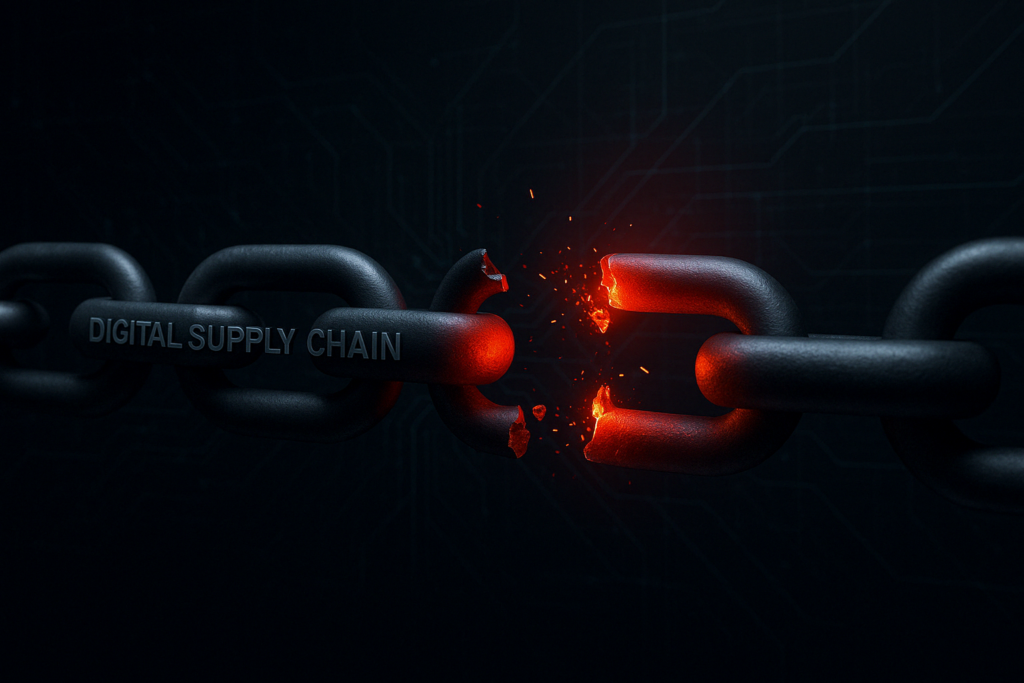
When people hear “supply chain cybersecurity,” they usually picture container ships or warehouse hacks. But that’s not what this post is about. This is the digital supply chain: the behind-the-scenes web of software vendors, IT tools, and service providers that power nearly every organization. And if just one of those vendors gets hacked? It can crash everything downstream.
In November 2024, a ransomware attack on Blue Yonder, a major supply chain software provider, disrupted operations at Starbucks, Morrisons, and Sainsbury’s. Starbucks employees had to track hours manually, highlighting a growing national security concern: how one supplier’s failure in supply chain cybersecurity can ripple across an entire ecosystem. This wasn’t just a minor glitch, it was a full-blown operational crisis triggered by a third-party vendor.

As more businesses adopt complex vendor networks, the importance of supply chain cybersecurity has skyrocketed. Yet, it remains one of the most overlooked elements in supply chain cybersecurity planning. Even organizations with airtight internal defenses can fall victim to an exposed partner. According to Forbes, over 10 million individuals and 1,700 organizations were affected by supply chain breaches in 2022 alone. In 2025, supply chain cybersecurity isn’t just a technical issue, it’s a leadership one.
⏱️ Estimated read time: 14 minutes
Table of Contents
- Understanding the Modern Digital Supply Chain
- The Supply Chain Threat Landscape in 2025
- AI’s Dual Role in Supply Chain Cybersecurity
- Case Studies: When a Single Supplier Crippled a Giant
- Defensive Measures & Frameworks
- Policy, Regulation & Global Cooperation
- Conclusion: Looking Ahead
- Key Takeaways
- FAQ
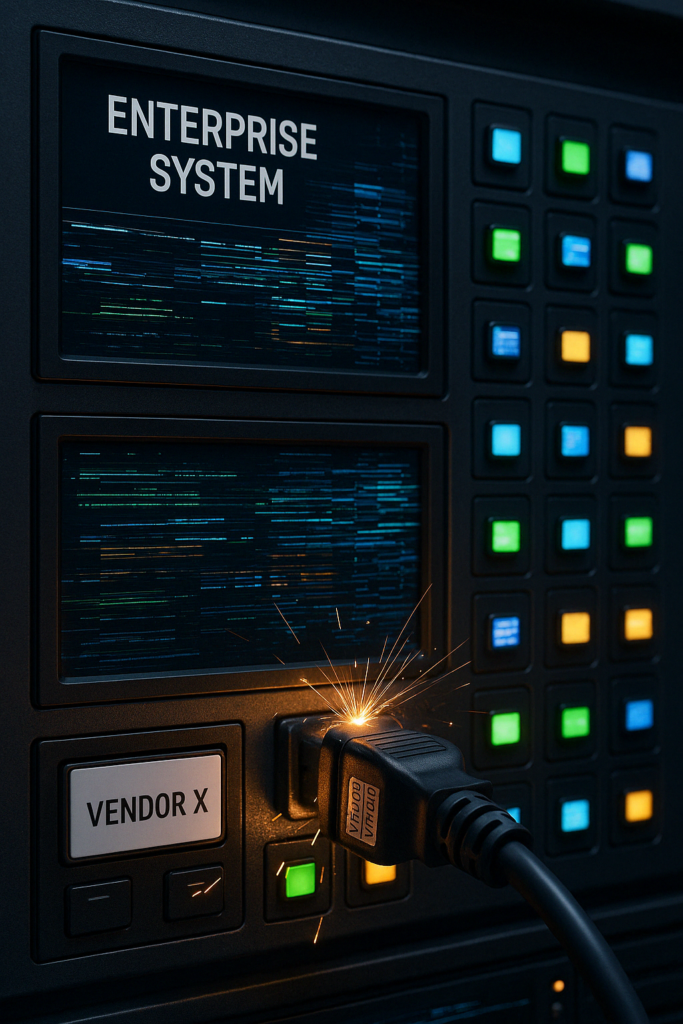
This post dives deep into the supply chain cybersecurity landscape, breaking down the evolving risks, recent breaches, and what it takes to secure third-party ecosystems. From AI-enhanced threats to international regulatory gaps, we cover the terrain policymakers, CISOs, and IT leaders need to understand, because in 2025, securing your supply chain isn’t optional. It’s mission-critical.
Understanding Modern Digital Supply Chain Cybersecurity

What Constitutes a Cyber Supply Chain Today?
Modern supply chains extend far beyond trucks and warehouses. They include:
- Software vendors and cloud platforms
- API integrations and SaaS tools
- Hardware firmware providers
- IT contractors and third-party developers
Each component introduces new cyber risk vectors .which makes them key concerns in supply chain cybersecurity planning.. Fortinet describes these integrated systems as “networks of trust” that can become “networks of threat” when even one node is compromised.
The “Trust Assumption” Problem

Organizations routinely assume their vendors have equal or stronger security practices. That assumption is dangerous. It creates blind spots in vetting, oversight, and detection. Hackers know this and target the least-defended entry point, often a smaller, poorly resourced supplier. Every trusted integration represents a potential vendor cybersecurity risk if left unmonitored.
Why Attackers Prefer Supply Chains
A direct breach requires effort and risk. A supply chain attack offers scale, stealth, and longevity. Breaching one supplier can grant access to hundreds of customers. The SolarWinds breach is a textbook case: attackers inserted malware into a software update, affecting over 18,000 customers, including U.S. government agencies.
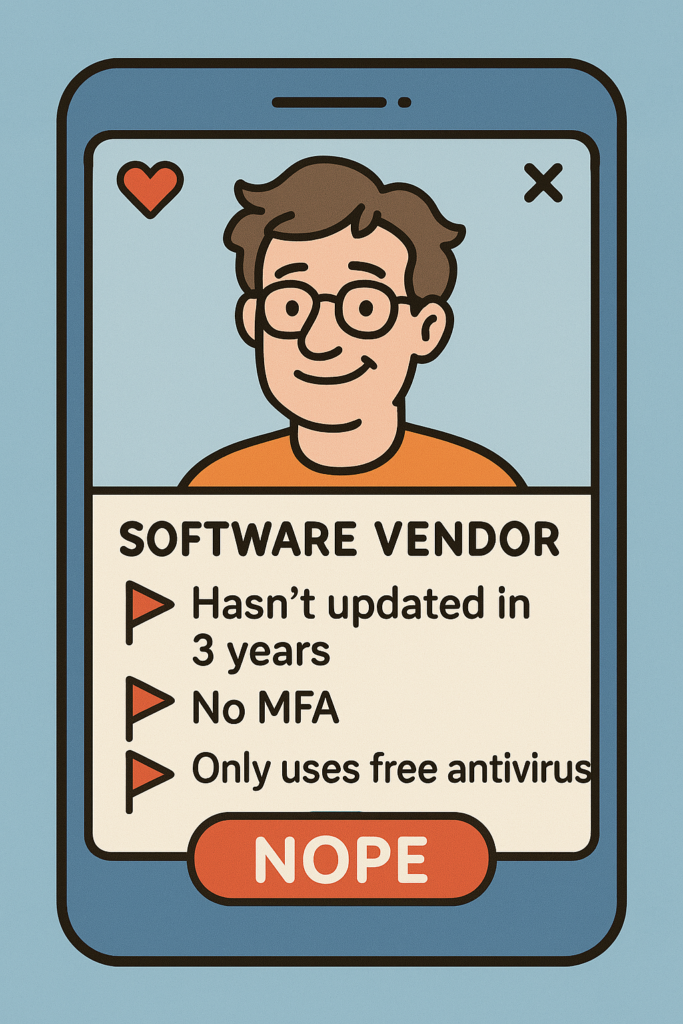
The Supply Chain Threat Landscape in 2025
Recent Breaches that Redefined the Risk
The past five years have reshaped how experts view software supply chain cybersecurity and software vendor risk. Threat actors are no longer content with targeting a single organization, they seek out central chokepoints that can unlock entire ecosystems.
- SolarWinds (2020): State-sponsored hackers inserted malware into Orion’s software update system. The attack remained undetected for months and compromised agencies like the Department of Homeland Security and the Treasury.
- MOVEit (2023): A zero-day vulnerability in the MOVEit Transfer tool resulted in data exposure across 2,700+ organizations, including Shell, the BBC, and various U.S. government contractors.
- Okta Service Provider Breach (2022): Threat actors targeted Okta through a third-party support provider, gaining limited but sensitive access to identity and access management systems used by thousands of enterprises.
- Kaseya (2021): REvil ransomware operators exploited Kaseya’s remote monitoring tools to distribute malware to 1,500 downstream clients.
These breaches share a common theme: a compromised vendor becomes a pivot point to launch large-scale attacks that traditional endpoint security tools can’t prevent. Difficult reminders of how fragile supply chain cybersecurity can be when vendor access is exploited.
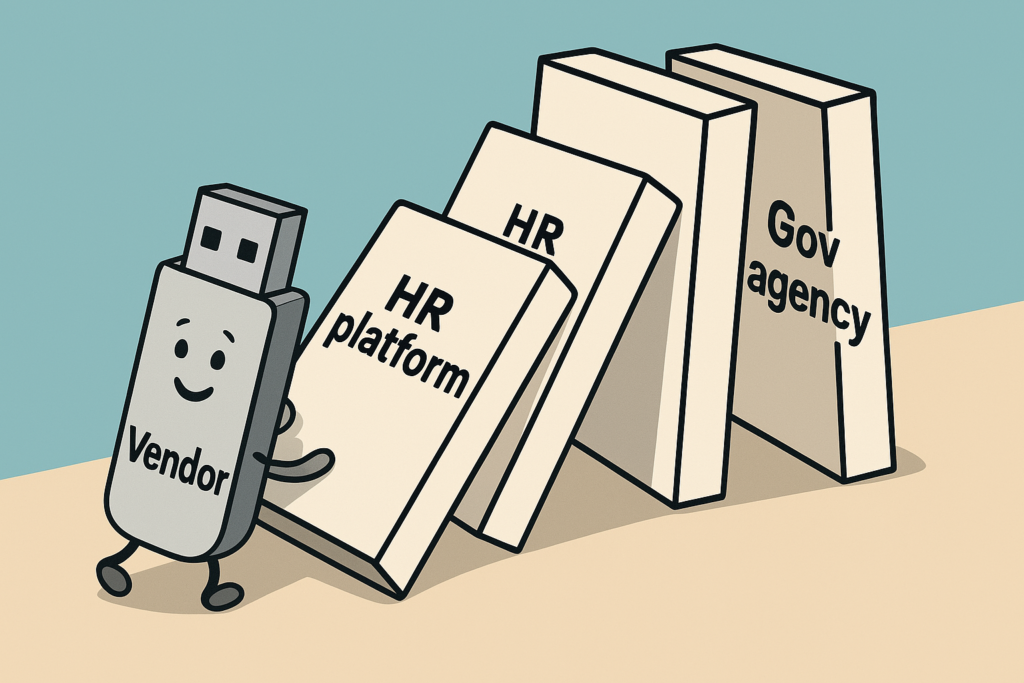
Top Attack Vectors in Supply Chains
Cybercriminals continuously adapt their tactics to exploit weaknesses in the secure software development lifecycle and third-party integration points. The most prevalent attack vectors include:
- Open-source dependency poisoning: Threat actors inject malicious code into publicly available packages, which are then unknowingly incorporated into enterprise apps.
- Compromised software update mechanisms: As seen in SolarWinds and NotPetya, attackers manipulate trusted update systems to deliver malware.
- Stolen vendor credentials: Phishing and social engineering attacks on vendor employees give attackers legitimate access to internal systems.
- Shadow IT and unsanctioned integrations: Unmonitored third-party tools often lack security controls and go unnoticed by centralized IT teams.
According to Cisco’s Outshift division, nearly 80% of recent breaches in 2023 and early 2024 involved a third-party component or vendor misconfiguration.

Sectors at Greatest Risk
No industry is immune, but some are far more exposed due to the volume and sensitivity of their vendor relationships.
- Critical Infrastructure: Utilities and transportation networks rely on niche software from small providers, many of whom lack the budget or personnel for robust cybersecurity. We covered this extensively in our post on AI-Powered Cyberattacks on Critical Infrastructure.
- Defense and Aerospace: Sensitive military projects often involve thousands of subcontractors. A single compromised firm can leak strategic IP or classified access credentials.
- Healthcare: From electronic health record systems to infusion pumps, the medical sector relies on interconnected tools. The risk is heightened by HIPAA requirements and legacy systems still in operation.
- Financial Services: Core banking, fraud detection, and trading platforms depend on a web of fintech integrations and cloud service providers. Any breach here can have massive regulatory and reputational fallout.
In 2025, attackers are increasingly targeting these high-value verticals, not by breaching the institution directly, but by compromising their weakest link. That’s why supply chain cybersecurity in these sectors is now seen as mission-critical.
👉 Want threat briefings like this in your inbox? Subscribe now for weekly insights built for CISOs, policymakers, and cybersecurity professionals.
AI’s Dual Role in Supply Chain Cybersecurity
How AI Supercharges Supply Chain Attacks
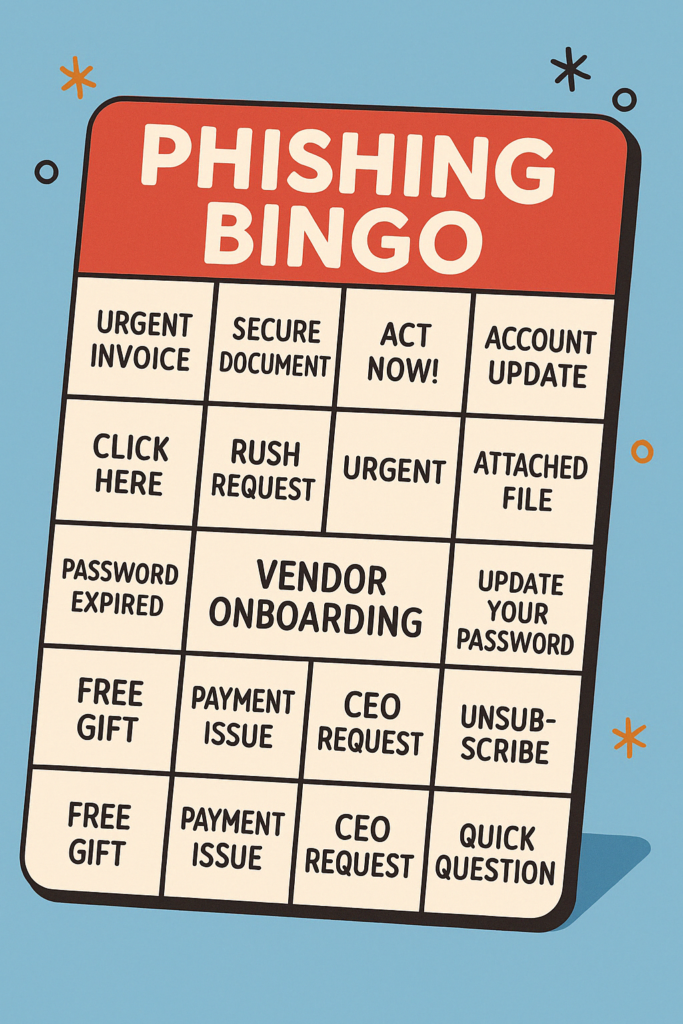
Artificial intelligence is transforming the threat landscape by accelerating attackers’ capabilities. Threat actors now deploy AI to:
- Automate vulnerability scanning across thousands of vendors simultaneously
- Prioritize the most lucrative or weakly defended supply chain targets
- Craft convincing phishing emails and deepfake voice messages to extract credentials from vendor employees
- Circumvent traditional behavioral-based security tools by mimicking legitimate software behaviors
This new class of AI-driven attack is faster, more adaptive, and harder to trace. For instance, tools like WormGPT and FraudGPT are now being used to generate highly convincing phishing templates targeting IT help desks and vendor onboarding portals.
📚We’ve seen these tactics evolve rapidly, especially in cases like those detailed in The AI-Powered Malware Time Bomb.
Defensive AI for Supply Chain Monitoring
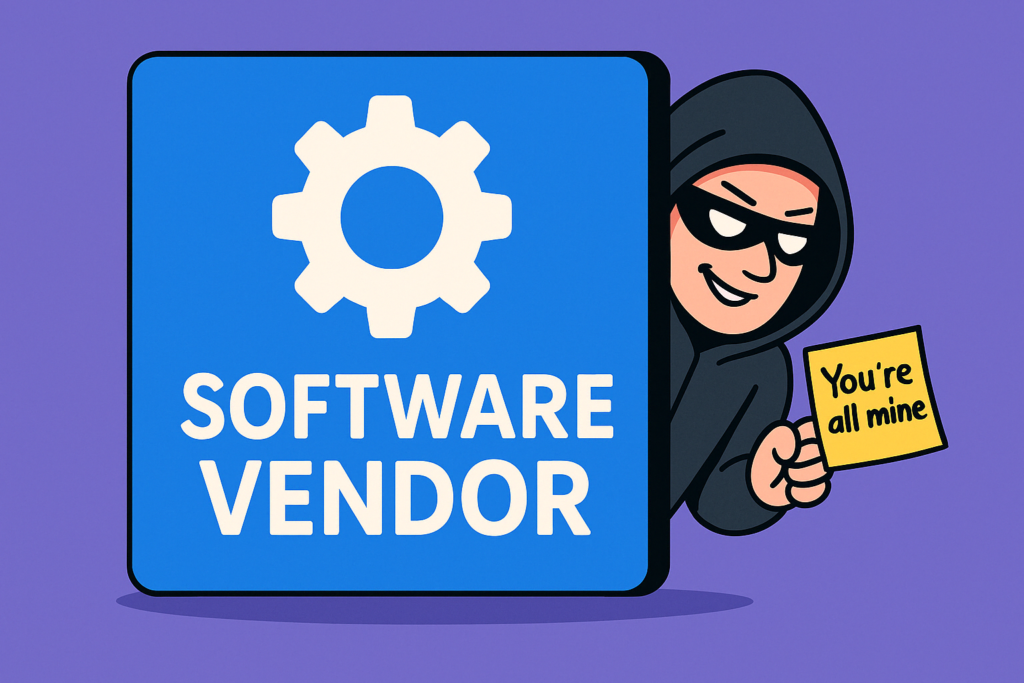
On the defensive front, AI is being used to build smarter, more proactive supply chain monitoring systems. These include:
- Anomaly detection: Identifying unusual activity in vendor data flows, API requests, and logins
- Behavioral baselining: Using machine learning to establish a normal operating profile for each vendor, flagging deviations
- Predictive risk scoring: Continuously assessing vendors based on emerging threat intelligence, performance history, and external reputation metrics
This approach gives CISOs a real-time picture of third-party risk across an entire ecosystem, helping identify emerging vulnerabilities before they’re exploited. These systems are becoming essential for next-generation supply chain cybersecurity defenses.
The Challenge of Explainability in AI Defense
Despite its power, AI-based defense presents its own challenge: explainability. Black-box systems may flag anomalies or block integrations without a clear reason. In sectors with strict compliance obligation, such as finance, healthcare, and defense, security teams must justify every action taken.
This lack of transparency can undermine trust in the system or slow response times as teams investigate AI-generated alerts. As a result, there’s a growing demand for explainable AI (XAI) frameworks that combine predictive power with clear audit trails, especially as AI becomes embedded in supply chain risk assessments.
Case Studies: When a Single Supplier Crippled a Giant
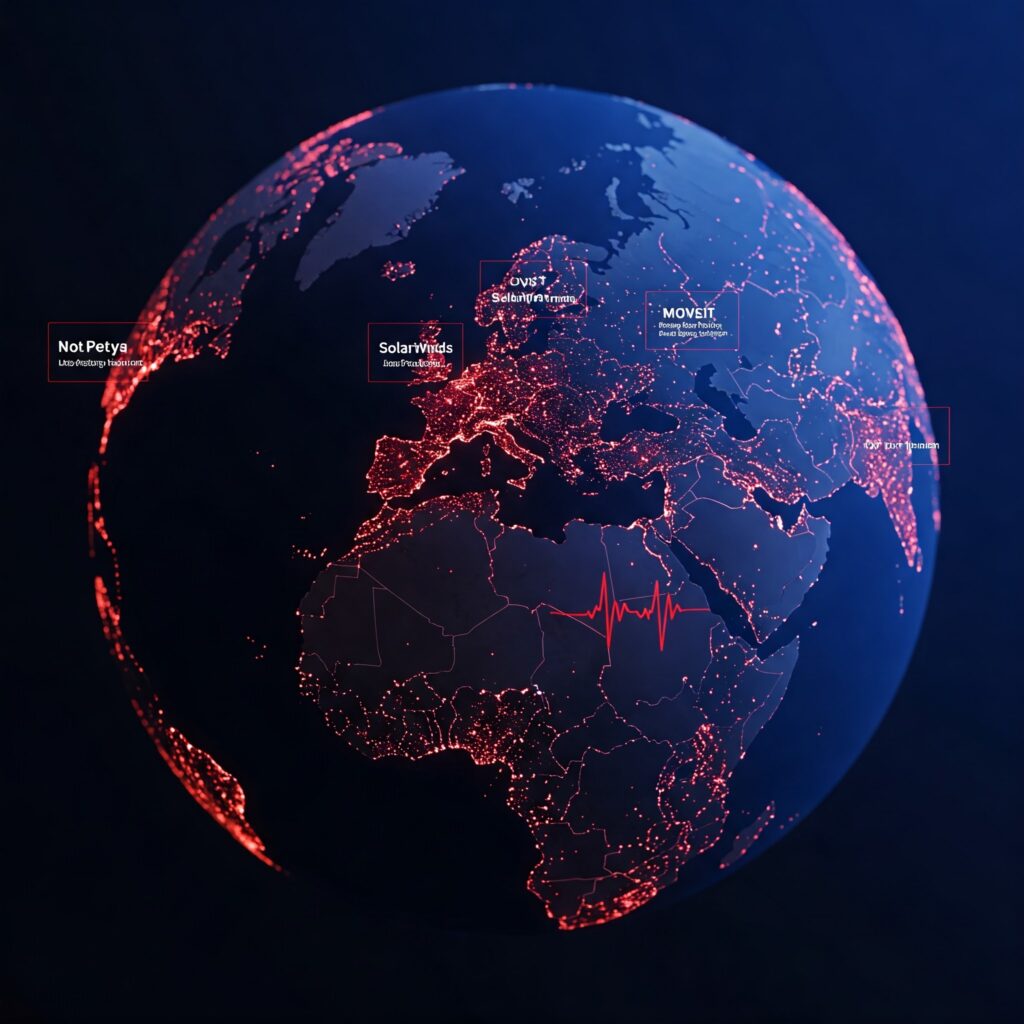
SolarWinds and the Federal Fallout
The SolarWinds attack in 2020 redefined the scale and sophistication of supply chain cybersecurity threats. Hackers, widely believed to be affiliated with Russia’s Foreign Intelligence Service (SVR), compromised the software build system of SolarWinds’ Orion platform. They inserted a stealthy malware strain dubbed SUNBURST into a routine software update, which was then distributed to roughly 18,000 customers.
This wasn’t just a theoretical risk. Agencies like the Department of Homeland Security, the Treasury, and the Department of Commerce were infiltrated. The attackers gained deep lateral access, siphoning off sensitive communications and strategic intelligence for months before discovery. According to the U.S. Government Accountability Office, the breach cost U.S. taxpayers an estimated $100 million in mitigation and response efforts.
The SolarWinds case demonstrated how a single vendor’s compromised update server could cascade into a national security incident. It also revealed how slow traditional security systems are in detecting these kinds of stealthy, trust-based attacks.
MOVEit and the Third-Party Data Leak Crisis
In May 2023, Progress Software disclosed a critical zero-day vulnerability in its widely used MOVEit Transfer tool, a secure file transfer application used across government, energy, finance, and education sectors. Threat actors exploited the flaw to gain unauthorized access to systems and exfiltrate data en masse.
Within weeks, over 2,700 organizations had been impacted, and more than 93 million individuals’ personal data was exposed. Victims included Shell, the BBC, the U.S. Department of Energy, and state agencies in Colorado and Illinois. MOVEit’s centralized role in secure file delivery made it a perfect vector: one exploit, hundreds of breaches.
Unlike traditional ransomware, this was a pure data exfiltration play. The attackers, identified as the CL0P ransomware group, leveraged the exploit in a coordinated campaign and published data on the dark web to extort payment. This case reinforced the importance of real-time vulnerability management and patch application in supply chain software.
NotPetya and the Chain Reaction Across Ukraine and Beyond
Although initially believed to be ransomware, NotPetya, a malware attack that originated in Ukraine in 2017, was later classified as a destructive wiper. It spread through a backdoor inserted into the update system of M.E.Doc, a Ukrainian accounting software provider used to file taxes.
The consequences were catastrophic. NotPetya crippled operations at Maersk (the global shipping giant), Merck (a pharmaceutical firm), FedEx’s European subsidiary TNT Express, and even interfered with radiation monitoring at the Chernobyl nuclear site. Damage from the attack is estimated to exceed $10 billion globally.
NotPetya wasn’t just an attack on Ukraine’s private sector, it became another of the weaponized software supply chain attacks with worldwide reach. It showed how even obscure regional vendors, if connected to global firms, can become a launchpad for geopolitical cyberwarfare.
Defensive Measures & Frameworks for Supply Chain CyberSecurity
Vendor Risk Management and Third-Party Audits
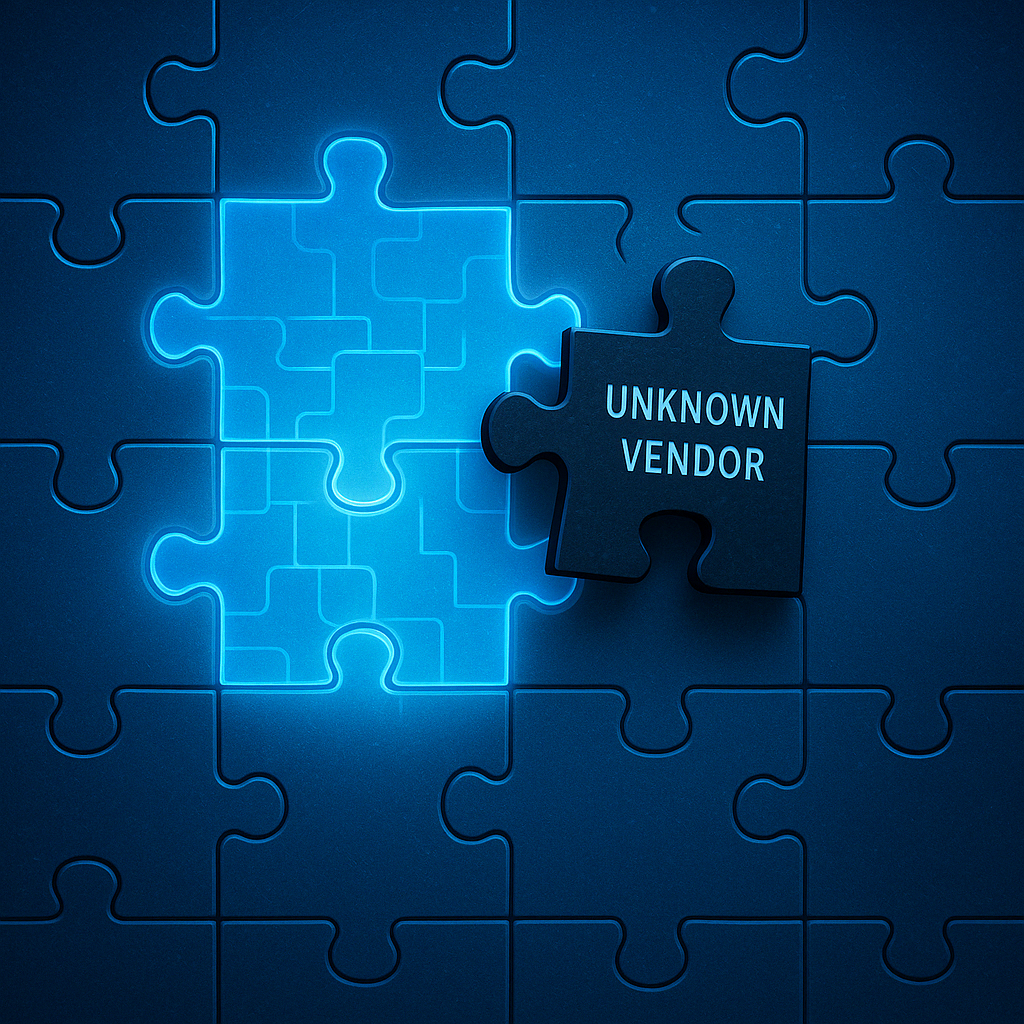
Effective supply chain cybersecurity starts with robust vendor risk management. Organizations must treat every external connection, whether it’s a SaaS platform, logistics system, or firmware provider, as a potential entry point for attackers. This means moving beyond one-time vendor assessments and adopting continuous oversight.
Key practices include:
- Adopting NIST SP 800-161: This standard provides a comprehensive framework for managing supply chain cybersecurity risk, emphasizing visibility, integrity checks, and ongoing monitoring.
- Requiring SOC 2 or ISO 27001 compliance: These third-party audits validate that a vendor follows industry best practices for cybersecurity, data integrity, and access controls.
- Implementing continuous risk scoring: Modern platforms can automatically score vendor risk in real-time using threat intelligence feeds, vulnerability scans, and breach disclosures.
Rather than relying on vendor-provided questionnaires, leading organizations are integrating API-driven vendor intelligence platforms that proactively flag issues and trigger automated reviews when risk thresholds are exceeded.
Zero Trust in the Supply Chain
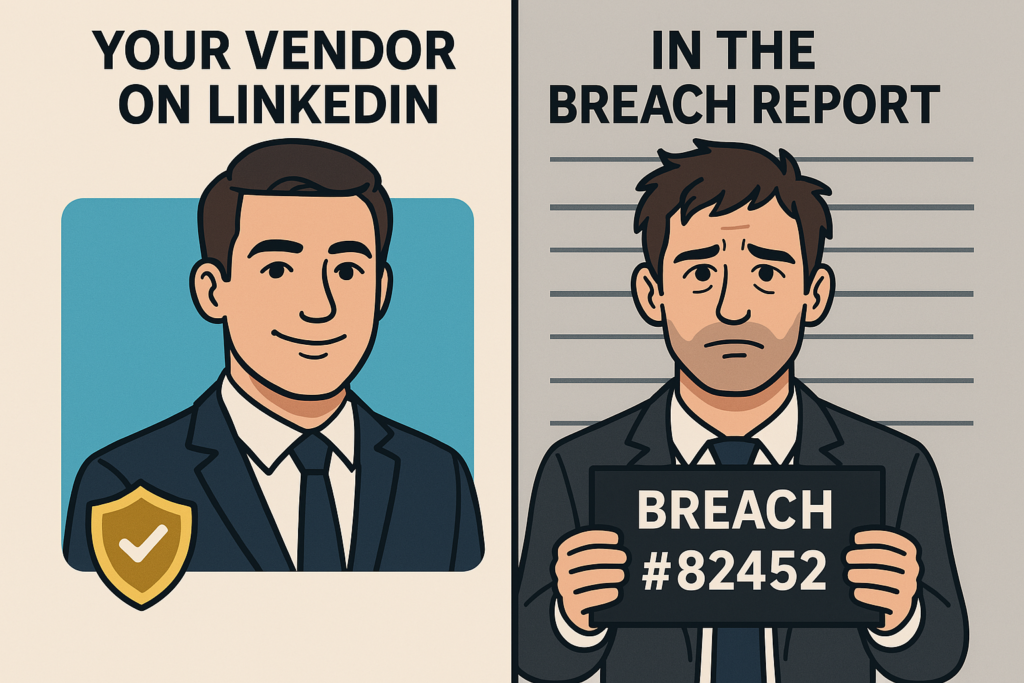
A core principle of supply chain cybersecurity is limiting how far attackers can move once they’re inside. Traditional network perimeter models are obsolete in a world of distributed cloud services and API integrations. Zero trust architecture (ZTA) provides a modern alternative by assuming that no system, internal or external, should be trusted by default.
In the context of software supply chain security, this means:
- Implementing least privilege access: Vendors should only access the systems, files, and databases they absolutely need, nothing more.
- Microsegmentation of APIs and data flows: By isolating functions and services, a compromised vendor can’t freely move laterally through a network.
- Real-time access control enforcement: Identity-aware proxies and multi-factor authentication must be used for every access point, especially for vendor credentials, which are frequent targets in software supply chain attacks.
Zero trust is a central pillar of modern supply chain cybersecurity, ensuring that vendors cannot move freely even if breached. This approach limits blast radius. If one node is breached, the damage can be isolated and contained. If one node is breached, the damage can be isolated and contained.
Secure Software Development and SBOMs
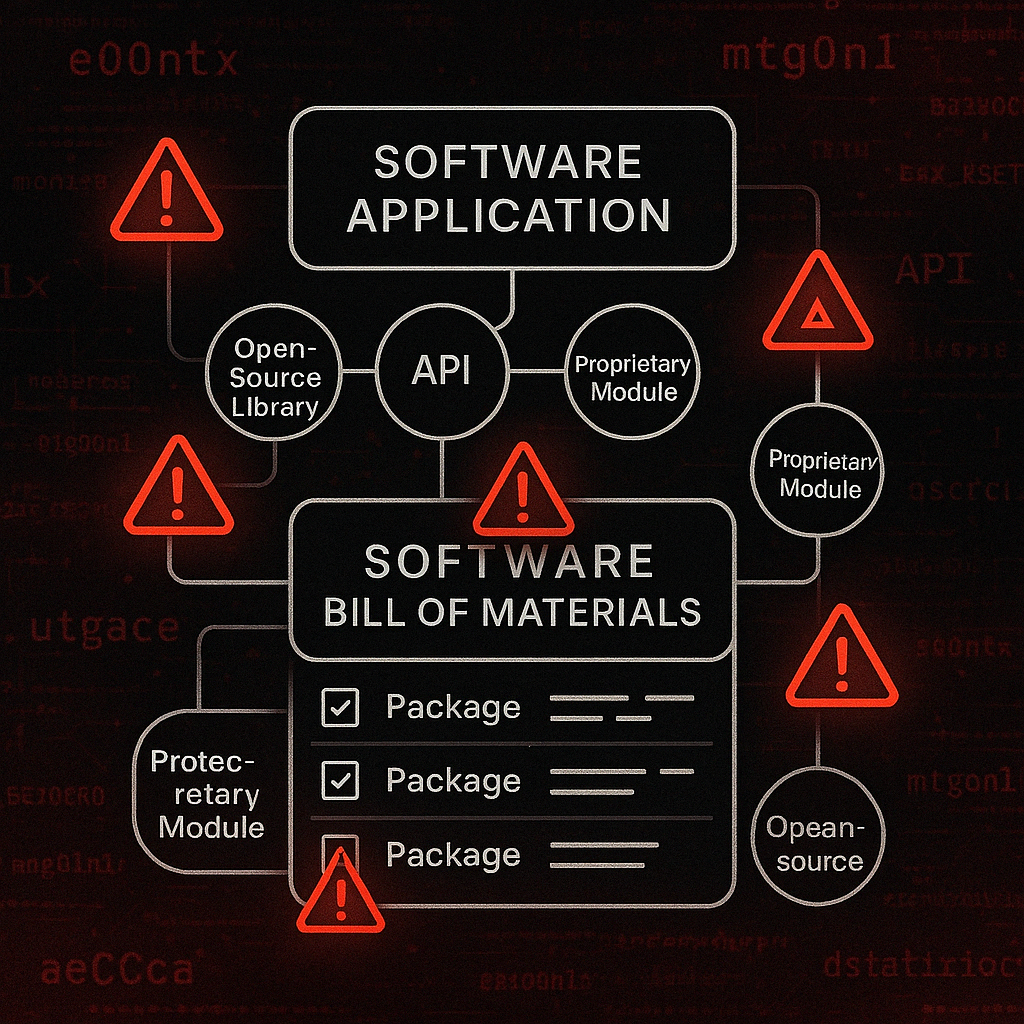
With software now assembled from dozens or hundreds of open-source and proprietary components, it’s essential to know exactly what’s inside. That’s where a Software Bill of Materials (SBOM) becomes critical.
An SBOM is a formal record of the components used in a software application, including:
- Open-source libraries
- Dependencies and sub-dependencies
- Licensing and known vulnerabilities
SBOMs were mandated by Executive Order 14028 for all U.S. federal software procurement as a foundational element of supply chain cybersecurity for federal vendors, and their use is spreading globally. They allow cybersecurity teams to:
- Rapidly identify exposure during new vulnerability disclosures (e.g., Log4j)
- Prioritize patching based on real inventory, not guesswork
- Ensure open-source components follow secure software development practices
In tandem with SBOMs, secure software development lifecycle (SDL) practices, like code signing, reproducible builds, and software supply chain security integrity scanning, are now essential for vendors hoping to win government and enterprise contracts. These practices not only improve code integrity but are now standard components of robust software supply chain security frameworks.
Incident Response Playbooks for Software Supply Chain SEcurity Compromise
When a third-party vendor is breached, speed matters. Every delay increases the risk of lateral movement, data exfiltration, or ransomware propagation. That’s why incident response plans must now include detailed software supply chain security-specific playbooks.

Effective playbooks should include:
- Vendor coordination protocols: Know who to contact, what information to demand, and which contractual obligations apply (e.g., 24-hour breach notifications).
- Isolation procedures: Define exactly how to contain a vendor without disrupting mission-critical services.
- Internal escalation paths: Determine who needs to be informed, CISO, legal, communications, and what actions should follow at each severity level.
- Regulatory notification timelines: Compliance requirements (like GDPR or HIPAA) may kick in when third-party data is involved.
NIST’s Cyber SCRM Case Studies report emphasizes the need for simulation-based testing of these playbooks, not just documentation, so that cross-functional teams can practice response in real-world conditions.
Policy, Regulation & Global Cooperation
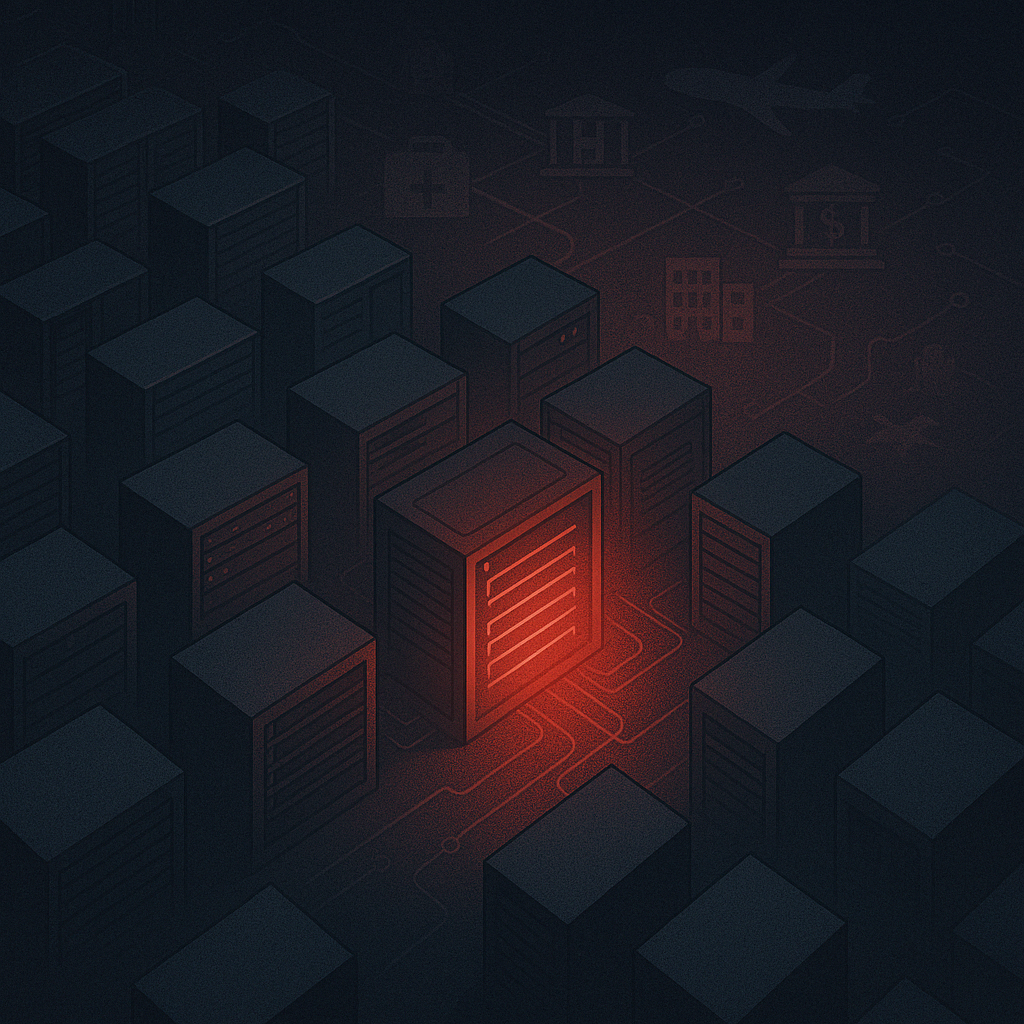
Government Actions to Secure Supply Chains
Governments around the world are waking up to the reality that supply chain cybersecurity isn’t just a corporate risk, it’s a national security imperative. In the United States, Executive Order 14028, issued in 2021, was a watershed moment. It mandated improvements in software supply chain security for all federal contractors, including:
- Requiring SBOMs for software procured by the government
- Establishing NIST standards for secure software development
- Mandating endpoint detection and response (EDR) tools for federal networks
This was followed by CISA’s “Secure by Design” guidance and the development of a Cybersecurity Performance Goals (CPG) framework to help organizations, particularly in critical infrastructure sectors, establish baseline defenses, including vendor risk controls.
Globally, other governments are adopting similar measures:
- The EU Cyber Resilience Act will soon require mandatory security updates, vulnerability disclosure programs, and conformity assessments for any software or digital product sold within the EU.
- In Japan, the Basic Act on Cybersecurity was amended to include specific third-party risk management provisions after multiple vendor-related breaches impacted government agencies.
What we’re seeing is a shift from passive regulation to proactive enforcement. This includes legal penalties for non-compliance and procurement exclusions for vendors who fail to meet cybersecurity baselines.
International Standards and Fragmentation Risks
While progress is being made, the lack of global harmonization creates significant friction. Vendors operating internationally face overlapping, and sometimes contradictory, requirements, such as:
- ISO/IEC 27036: The foundational international standard for ICT software supply chain security
- NIST SP 800-161: U.S. government guidance for software supply chain security and third-party risk management
- GDPR and HIPAA: Privacy regulations with strong implications for third-party data handling
For multinational corporations, this patchwork of frameworks creates compliance complexity and resource drain. Worse, it creates gray zones where attackers can exploit jurisdictions with weaker oversight or enforcement.
That’s why organizations like the World Economic Forum and the International Telecommunication Union are now calling for a global cybersecurity convention, one that sets minimum expectations for software supply chain security integrity, data handling, and cross-border breach notification.
Until such a convention exists, enterprises must map their regulatory obligations by geography and adopt the most stringent overlapping controls as a default, rather than chasing piecemeal compliance.
The Role of Cyber Insurance and Legal Liability
As regulatory expectations tighten, so do financial consequences. Cyber insurance has become both a risk hedge and an incentive lever for better supply chain cybersecurity controls. Insurers are now:
- Mandating security audits for all third-party software and service providers
- Increasing premiums or denying coverage for companies without formal vendor risk programs
- Requiring zero trust frameworks and endpoint telemetry as preconditions for breach-related payouts
On the legal front, courts are increasingly holding companies accountable for breaches that stem from poor vendor oversight. In the wake of the MOVEit breach, several class-action lawsuits were filed not just against Progress Software, but also against impacted customers who failed to apply the patch in time, even if they weren’t the initial breach vector.
In short: software supply chain security is no longer a shared responsibility, it’s a shared liability.

Conclusion: Looking Ahead at Supply Chain Resilience
In 2025, the stakes for supply chain cybersecurity are higher than ever. As demonstrated by breaches like SolarWinds, MOVEit, and NotPetya, one vulnerable vendor can take down not just a single organization, but entire sectors. The digitization of supply chains has outpaced the hardening of their security, and attackers have noticed.
Artificial intelligence has escalated both the complexity and the scale of attacks. Meanwhile, regulatory environments are evolving, but unevenly, leaving organizations to navigate inconsistent standards and reactive insurance markets. Building resilience starts upstream—with secure software development, vetted vendors, and continuous monitoring. The only path forward is proactive resilience.
That means shifting from checkbox audits to continuous risk assessment. From implicit trust to zero trust. And from reactive response plans to fully integrated supply chain defense strategies backed by AI, automation, and accountability.
Looking ahead, we’ll likely see three core shifts:
- Mandated transparency through SBOMs and third-party risk management certifications will become table stakes.
- AI-powered real-time monitoring of software supply chain security will become a competitive advantage.
- Legal exposure for breaches via third parties will continue expanding, even in shared-fault cases.
Supply chain resilience is no longer an IT issue. It’s a strategic imperative that affects national security, regulatory compliance, business continuity, and public trust. Every organization now has a responsibility to build real resilience into their supply chain cybersecurity posture. If your organization isn’t investing in it now, you’re already behind.
👉 We cover stories like this weekly. Subscribe to the Quantum Cyber AI newsletter for insights that help leaders protect what matters.
Key Takeaways
- One weak vendor can compromise an entire ecosystem. A single software supplier breach, like SolarWinds or MOVEit, can trigger cascading failures across thousands of organizations.
- AI is redefining both sides of the cyber arms race. Attackers use AI for speed, stealth, and deception, while defenders use it for detection, risk scoring, and anomaly monitoring.
- Recent attacks prove supply chain breaches are high-velocity and high-impact. Incidents like NotPetya caused billions in global damage within days, often via obscure vendors.
- Zero trust and SBOMs are no longer optional. These aren’t just best practices, they’re critical controls for reducing blast radius and improving response speed.
- Policy progress is happening, but fragmentation persists. Disparate global regulations complicate compliance and create vulnerabilities that attackers can exploit.
- Cybersecurity is now a shared liability. Legal and insurance frameworks increasingly hold companies responsible for third-party failures, even if they weren’t the original breach vector.
FAQ
Q1: Why are supply chain attacks so hard to detect?
Because they often exploit trusted connections, like software updates or vendor logins, malicious activity blends in with normal behavior until the damage is done.
Q2: How does AI impact supply chain cybersecurity?
AI enables attackers to identify weak links faster, generate targeted phishing, and simulate legitimate behavior. On the defense side, AI enhances anomaly detection and vendor risk analysis.
Q3: What exactly is an SBOM, and who needs one?
A Software Bill of Materials (SBOM) is a detailed inventory of all components within a software product. It allows organizations to pinpoint which systems are affected during a supply chain vulnerability, like Log4j or MOVEit, and patch accordingly.
Q4: What’s the best way to evaluate third-party vendors for cybersecurity risk?
Implement a structured risk management program that includes continuous monitoring, third-party risk management certifications (like SOC 2), contractual breach notification timelines, and enforced security controls.
Q5: Are governments doing enough to regulate software supply chain security?
Progress is being made, especially in the U.S. and EU, but without globally aligned enforcement and shared accountability, major gaps still exist.
